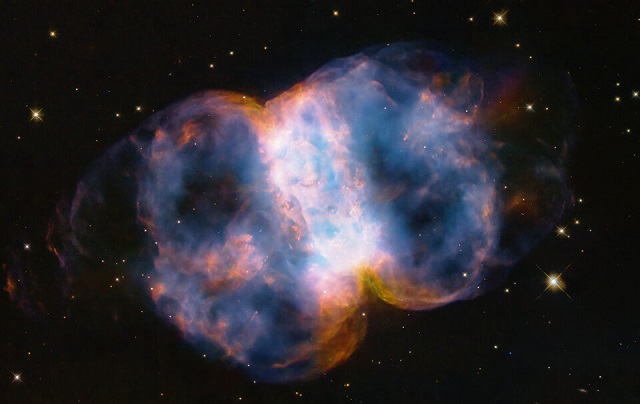Bob Siederer
29 April 2024

Hello again Science fans!
If you are one of those people who, like me, is interested in how things work, you may enjoy this video. It is about Olympic Curling Stones, how they are made, and why they cost so much. The process is fascinating. The granite only comes from one place on earth, Ailsa Craig off the Scotish coast. Two types of granite are used in each stone.
Curling can only be described as an odd sport. It is sort of like shuffleboard, but played on ice with heavy granite stones and teammates with brooms frantically sweeping the ice ahead of the moving stone to alter the speed and trajectory. The YouTube video comes from Ruth Aisling, a Scotish native who travels around Scotland and beyond in her camper exploring interesting places. Her accent is delightful too.
Put this one in the category of things I never knew I needed to know.
April 24 marked the 24th anniversary of the launch of the Hubble Space Telescope. The launch was a success, but the telescope couldn’t “see” clearly. The outer edge of the mirror was flatter than it should have been, resulting in different focal points across the mirror and a fuzzy image. Here’s NASA’s accounting of the discovery of the problem and the solution.
To celebrate the anniversary, NASA released the image above of the M76 nebula taken by the Hubble. The name M76 comes from Charles Messier who discovered it, although he was looking for comets, not nebulas. It is the 76th object he discovered. Astronomers are a pretty basic bunch when it comes to naming things.
The Hubble telescope has, of course, gone on to make countless discoveries leading to a better understanding of the Universe. While it is often said that the James Webb telescope replaces the Hubble, that really isn’t true. JWST and Hubble see the sky in different wavelengths of light and compliment each other.
Looking back even further, to 1977, we can mark the launch of Voyager 1. It and its sibling Voyager 2 are the only two man-made spacecraft to leave our solar system. About 5 months ago Voyager 1 stopped sending data back to earth that made sense and it looked like its mission was over. But NASA engineers were able to figure out that a section of Voyager’s memory had been damaged and was the cause of the faulty data. They coded a bypass around this section of memory and, on April 20, Voyager 1 began sending data that made sense back to earth again. Think, for a minute, about the computer technology aboard Voyager. Compared to the power in our smart phones, it is very, very basic. Yet it is still working, almost 50 years later.
There are a lot of things about the solar system and the Universe that we can’t explain, prove, or disprove (yet). Two that come to mind are the existance of Planet 9 and UFOs, and both are in the news.
Scientists say they have found new statistical evidence that there is a hidden planet in our solar system, outside the orbit of Neptune. This hidden planet has sometimes been called Planet 9. Objects at the outer reaches of the solar system move in ways that defy prediction and modeling suggests Planet 9 may be the cause.
UFOs, or unidentified flying objects, were the subject of John Oliver’s Last Week Tonight broadcast last Sunday. It is a humorous analysis of the history of UFOs, the folks on the periphery who believe they were abducted by aliens, and the government’s bad attempts at communicating with the public about sightings and causes. The skeptics among us laugh at the possibility, but you can’t prove a negative.
Physics and cosmology are deeply intertwined. Much of what we know about the mechanics of the universe involves the speed of light, something we can’t actually see, but know to an accurate degree. Well, MIT has a camera that is so fast, they’ve actually captured light as it travels, although somewhat indirectly. The video of this is pretty neat.
Moving on to the environment…in 2023 carbon dioxide levels in the atmosphere reached the highest level yet, around 50 times higher than before the industrial revolution. As you might imagine, this isn’t good. And in Antarctica, sea ice is disappearing at an alarming rate. Will it recover?
We have been under the influence of a strong El Niño current this past winter. It is breaking down, and the cold La Niña current seems poised to return. What does that mean for our summer weather? Models don’t agree totally, but here’s an analysis of the trends, the model results, and the outlook, both for the US and Europe.
Last Monday was Earth Day, observed on April 22 since 1970. Here’s some history from Heather Cox Richardson.
It was only a matter of time before CRISPR, the gene editing technology, and Artificial Inteligence got together.
So there we have it, a little bit of everything in the world of science and skepticism. Have a great week in Science!
Bob
Upcoming Events:
Click to see the next two weeks of events in your browser.
